
At the Chiro observatory a few days after the eclipse.
L - R Kent Wallace, Akira Fujii, myself, Mr Tomioka, Timo Karhula.
On February 15,1999, there was an annular eclipse of the Sun, where the track of annularity passed across Aurstalia. The track passed about 450km north of Perth, and about 30km south of the town of Geraldton. This eclipse was particularly interesting as the Moon was only just too small to cover the Sun. The duration of the annular phase in Western Australia was only around 30 seconds! This meant that only a very thin ring would be left around the Moon, very different from the annular eclipse over Perth in 1991, when a very wide ring of Sun was visible.
For this eclipse, I had planned to observe with a very international group. In addition to several friends from the local astronomical society, I was meeting up with Timo Karhula, a deep-sky observing friend from Sweden, Kent Wallace, a planetary nebulae observing friend from California, and astrophotographer Akira Fujii from Japan. In the end, we tended to observe from our own locations, and got together a few days after the eclipse at the Chiro Observatory to swap stories.

With the eclipse occurring in the middle of summer, there was very little danger of clouds, and as expected the eclipse day dawned perfectly clear, with the promise of a hot day ahead. I had journeyed up to the eclipse area the previous evening and spent the night observing with Kent . Carrying on the next morning I managed to meet up with my friends from Perth and with Timo. Following some last-minute hunting for needed equipment (ie duct tape!) we all headed for a site near the centreline, stopping along the way to meet up with some of the other international visitors.
Eventually we settled on a field near the village of Bookara, which was situated right on the centreline. The reason we chose this particular spot was that already there were a large number of people there and someone had a GPS system and so knew for certain that this was on the centreline! There was also plenty of room for people to spread out and some shade for parking the cars under!
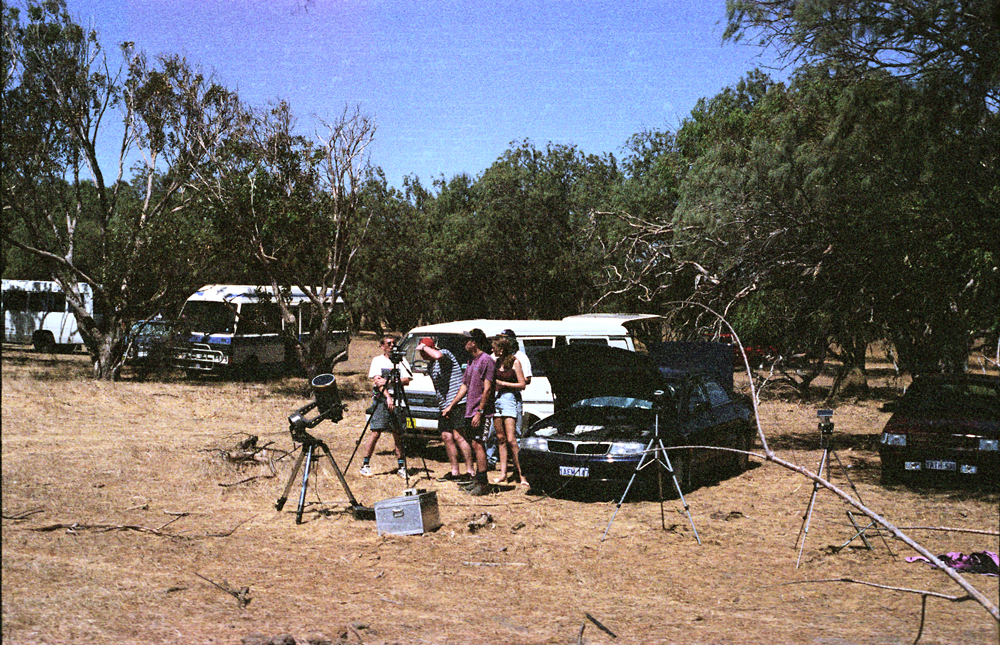
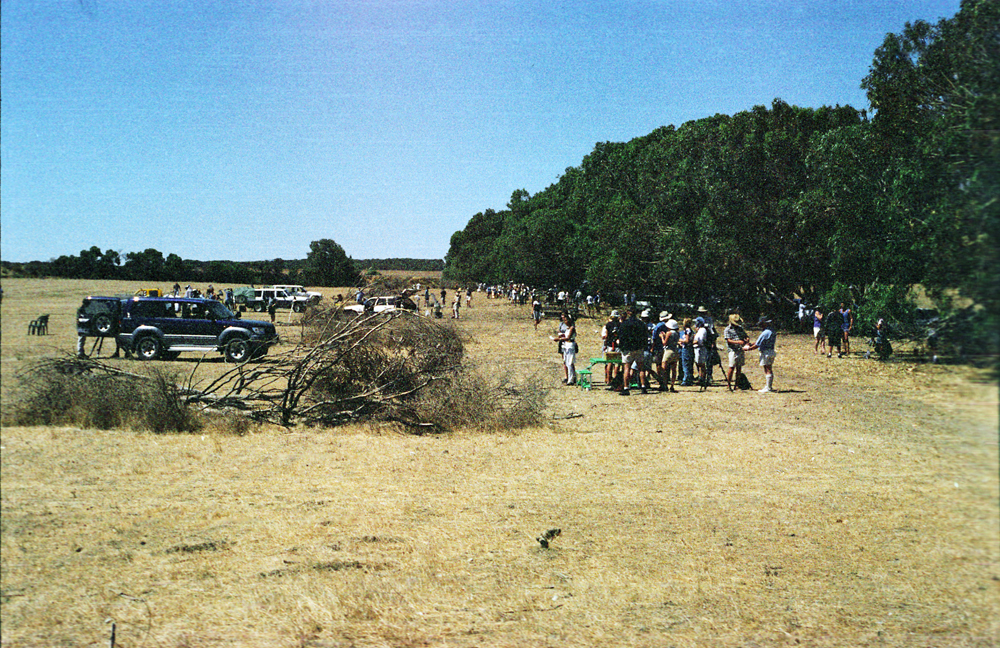
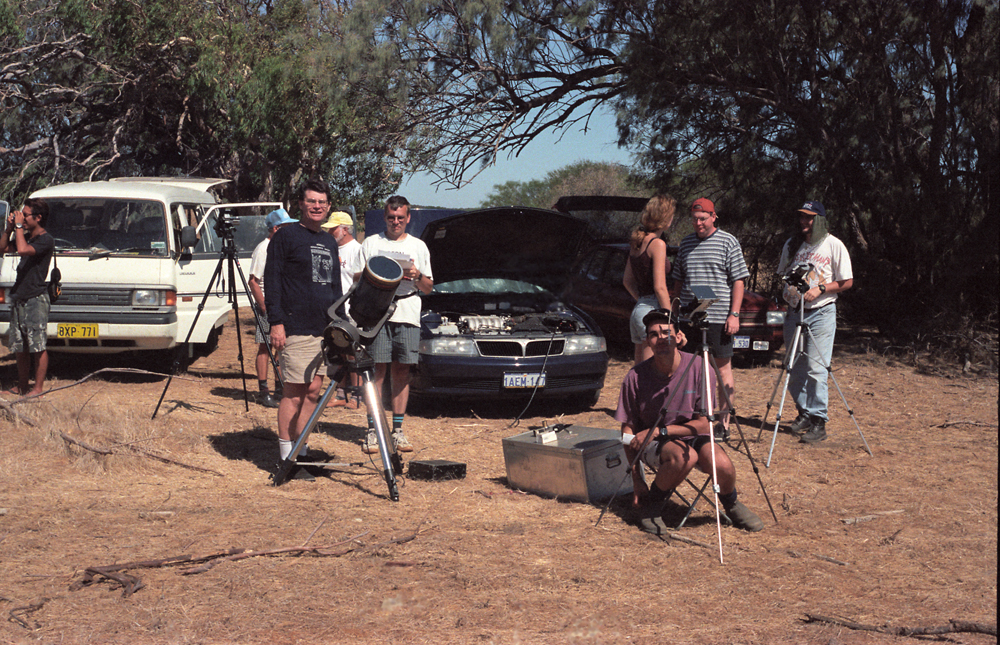
Ready at last for the eclipse.
1/500 second exposure, Fuji Super HG V 400 film.
50mm Nikkormat lens set at f/16.
Here I pose beside the telescope I used to observe and photograph the eclipse. Others in the picture are, next to the author, Swedish observer Timo Karhula, Darren Simpson, (sitting) Darren's girlfriend Jenny, Perth amateur Rick Tonello, (far right) and Rick's friend Andrew. (Talking to Jenny) Behind the author are Timo's father and a friend of his.
As the time for first contact approached, a stiff westerly sea breeze started blowing which brought welcome relief from the heat. This part of the Western Australian coast is well known for the strong westerlies that blow throughout the year, causing many of the trees to grow horizontally.
First contact passed without much excitement, although most observers were glued to their telescopes waiting to see the first bite out of the Sun.
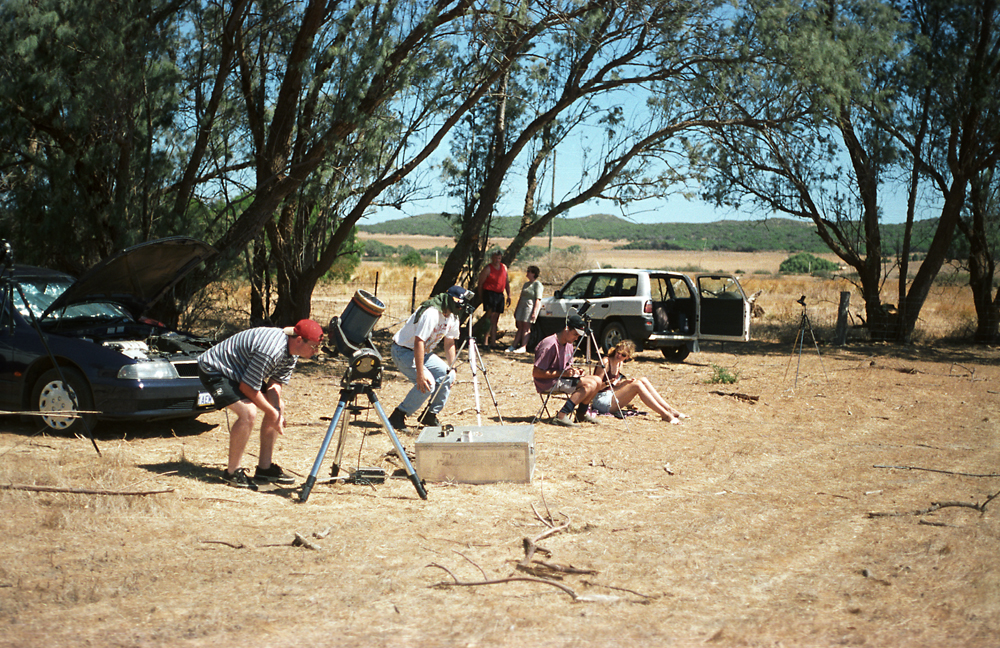
One thing that did make the partial stages more interesting was the Sun was very active at this time, and there were numerous sunspots visible.
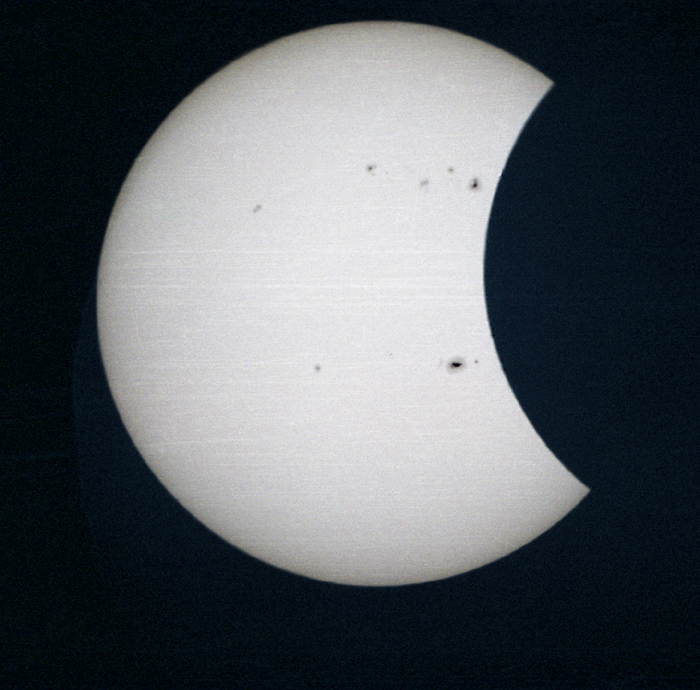
As the eclipse progressed, the excitement began to build. For many in the group, this was their first eclipse, so they were fascinated by the partial stages, and by the change in the light as more of the Sun was covered.
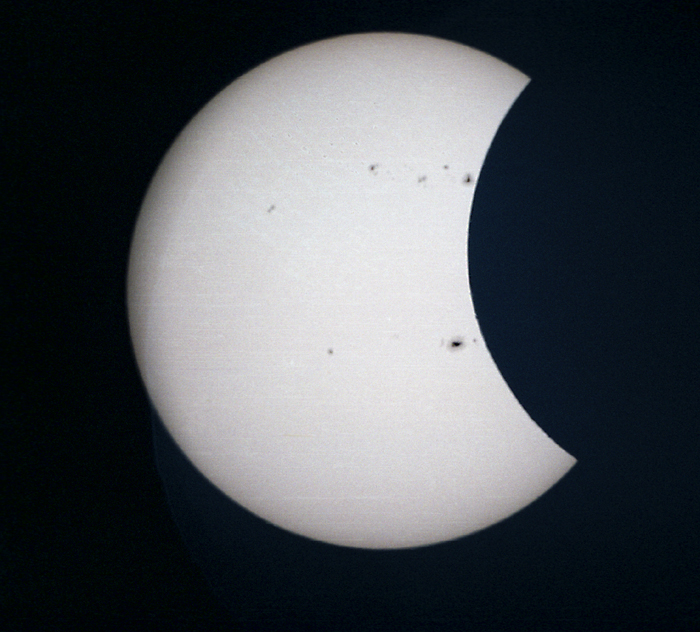
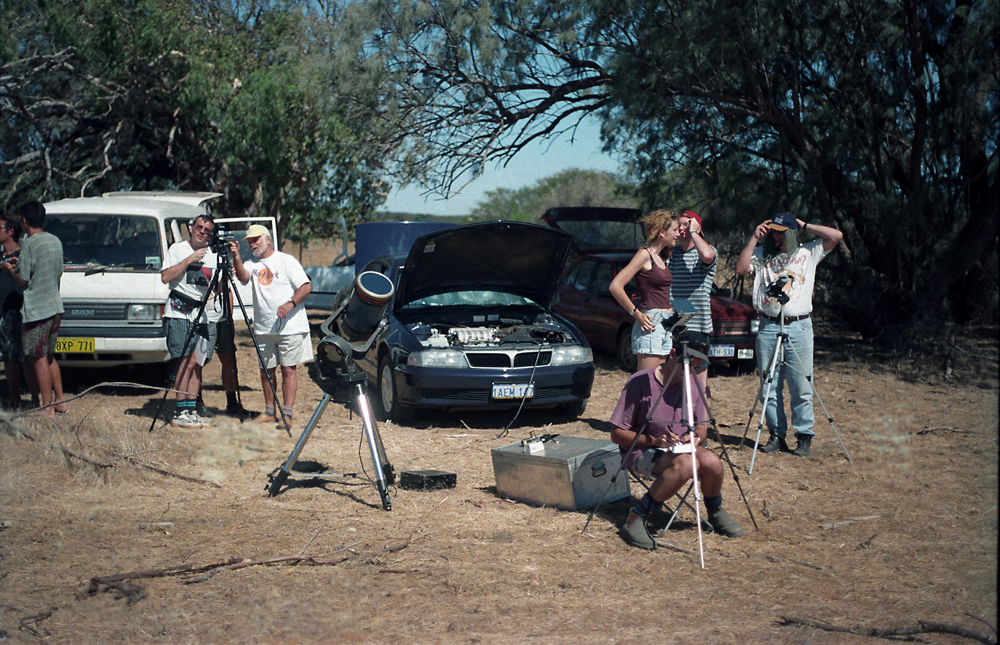
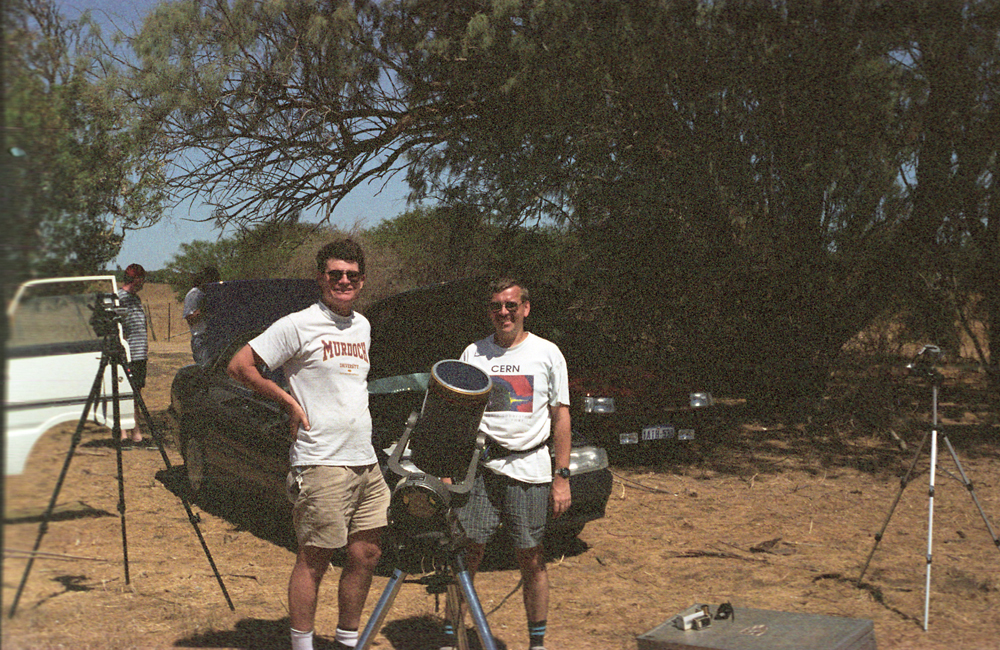
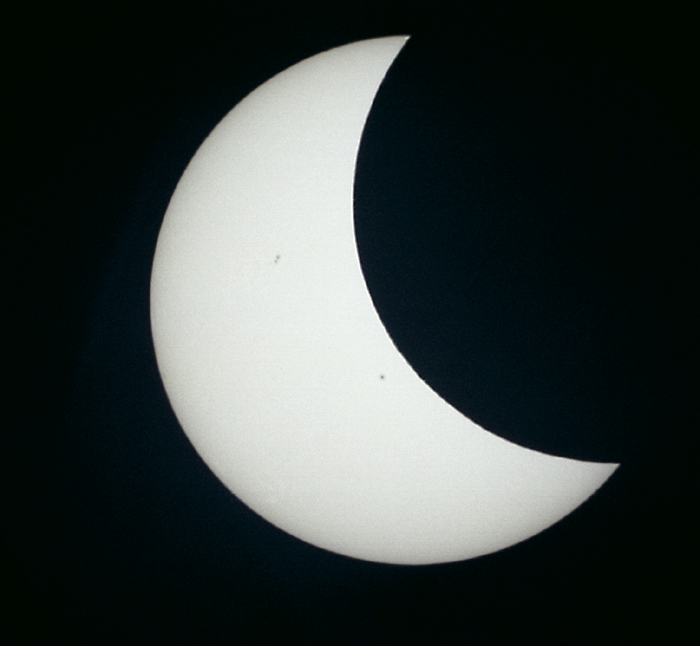
Deep into the partial stages.
1/500 second exposure, Fuji Super HG V 400 film.
8" f/10 schmidt-cassegrain telescope at prime focus, with full aperture solar filter.
Deep into the partial stages, people began to notice how strange the light had become. The light shining through the leaves of the trees began to assume the shape of the crescent Sun, which intrigued many people, and shadows on the ground also began to look strange. One side was very sharp while the other side was blurry. This effect is caused by the 2 horns of the crescent Sun giving a blurred edge to the shadow on one side, while the thin centre of the Sun gives a sharp edge to the shadow on the other side.
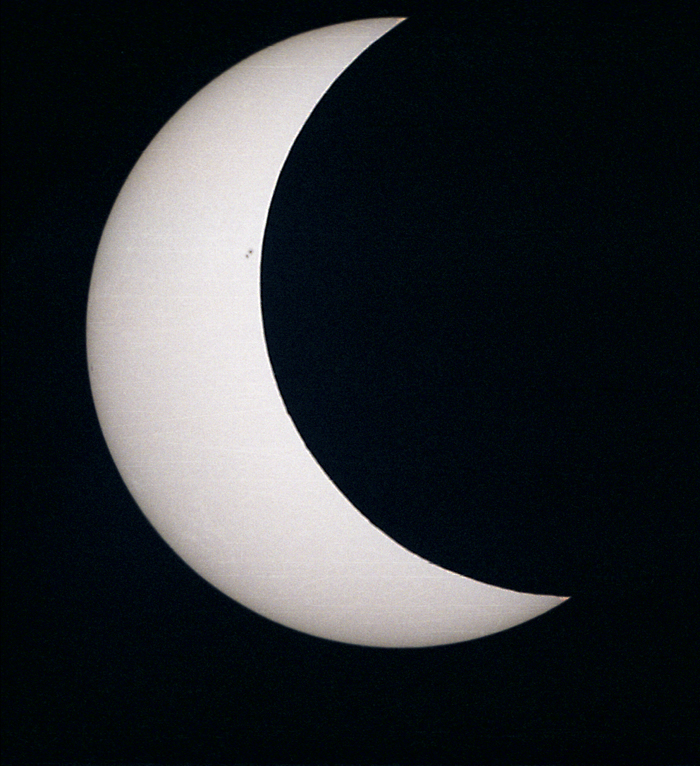
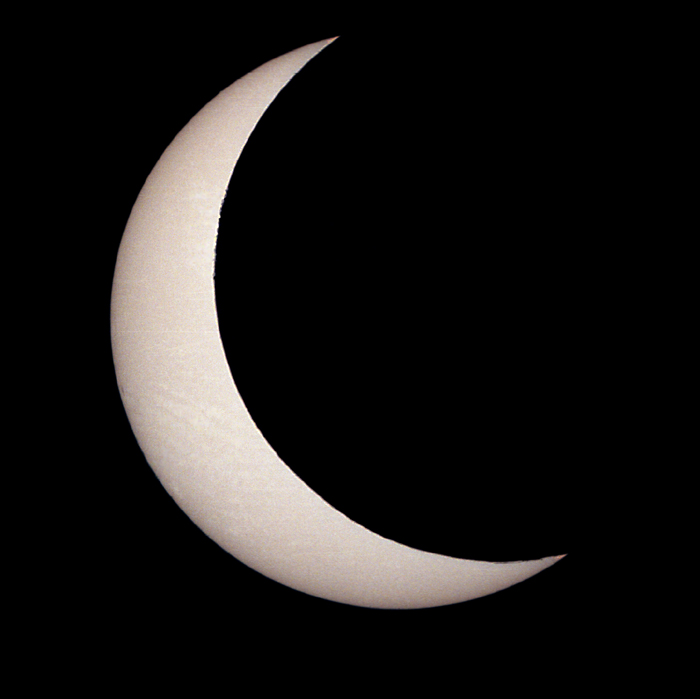
About 20 minutes before annularity, the sky was dark enough for several planets to be visible to the naked eye, and close to the annular phase, several stars were also visible.
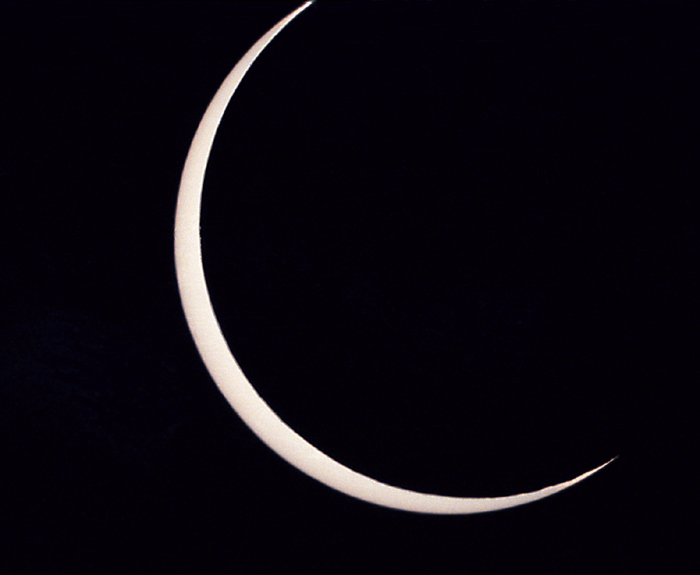
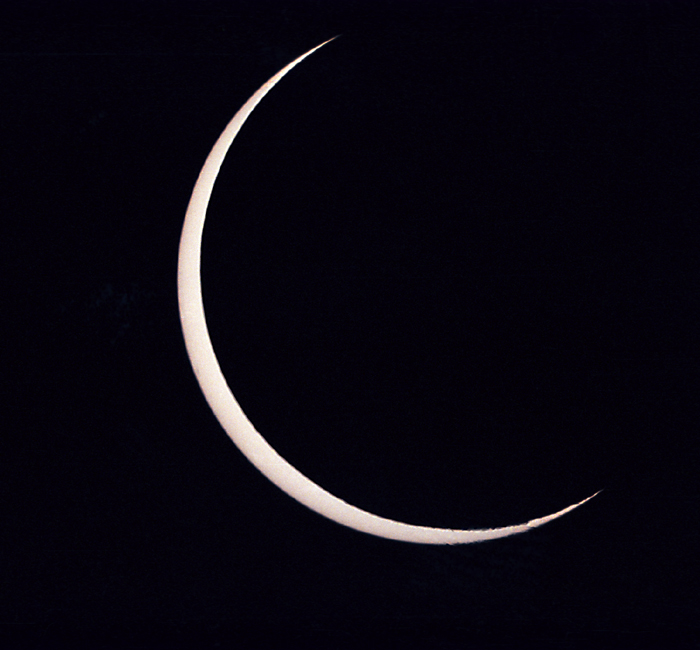
As annularity approached there was no indication that the Moon would be too small to cover the Sun. So it was something of a surprise to watch the thin horns of the crescent Sun extending around the Moon. What made it even more fascinating was the speed at which the horns extended. It was not without great difficulty, I pulled my eye away from the telescope and started using the camera!
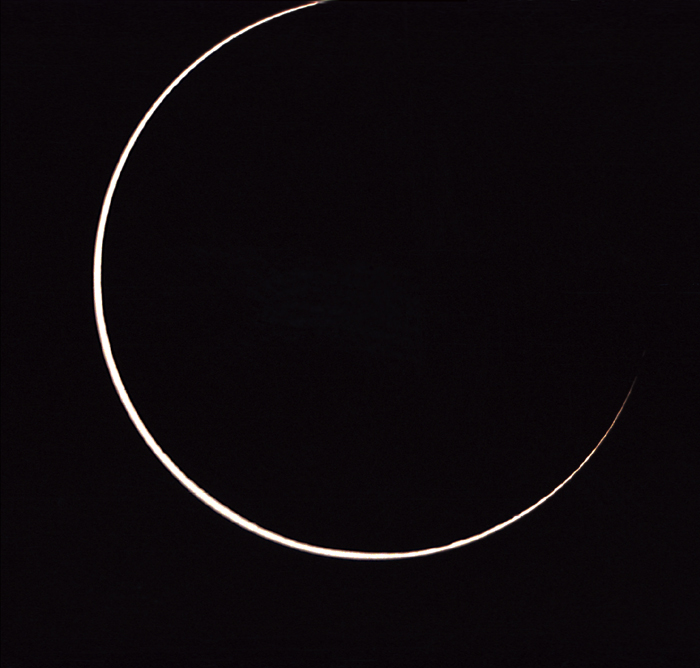
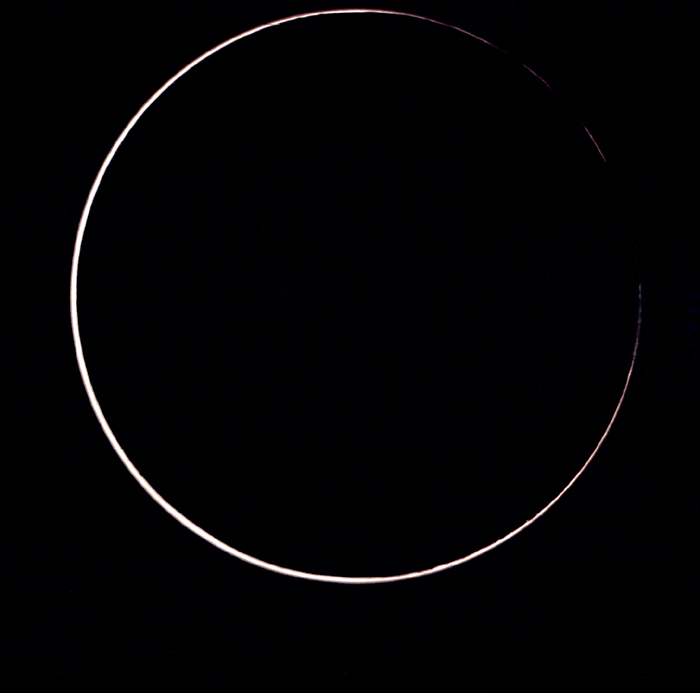
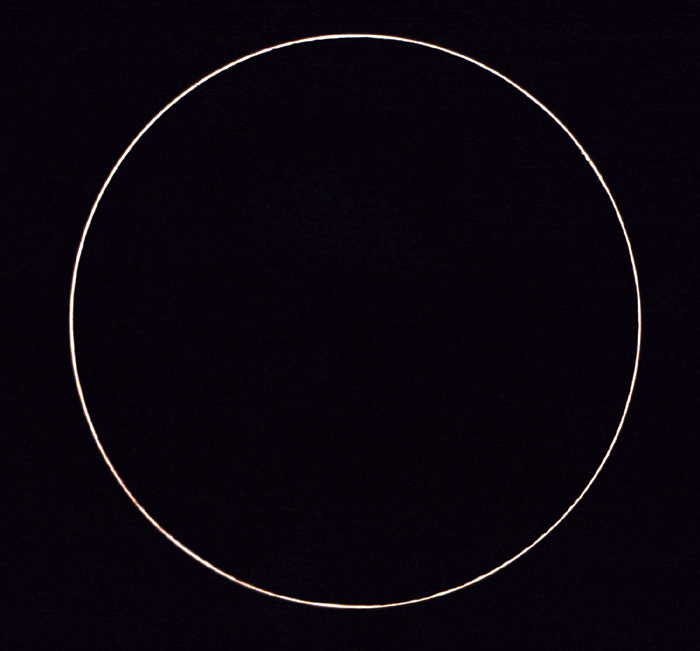
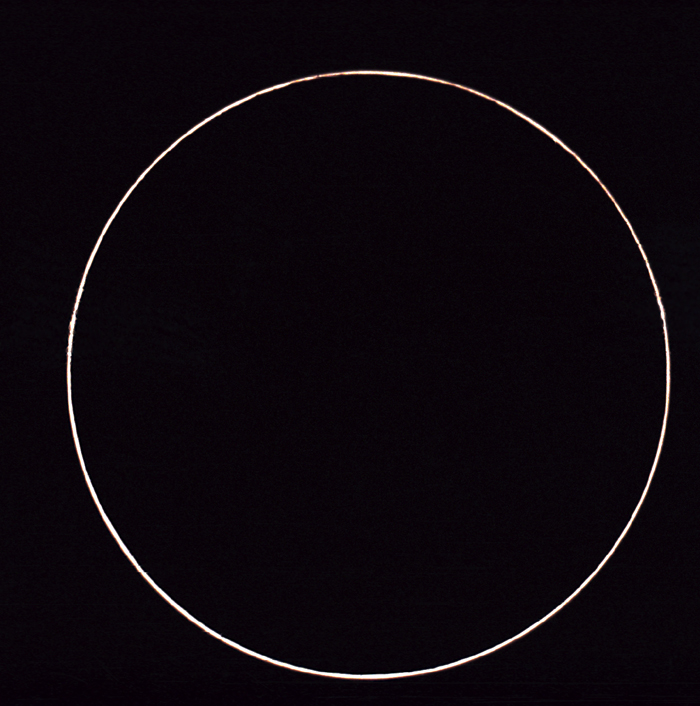
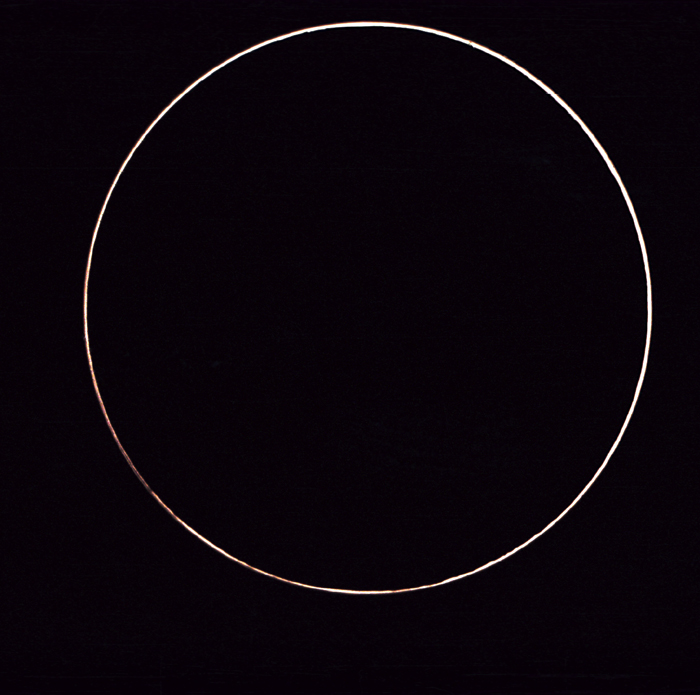
It was very tempting to remove the solar filter to see if it was possible to capture any of the inner corona, however in the end I decided not to try it for fear of damaging the camera. It was however quite a sight to look up at the sky and see such an incredibly thin ring around the very dark Moon. The sky was almost as dark as during a total eclipse and there was some hint of the inner corona. The sky itself was a deep bluish/purple colour, and it was possible to see the shadow of the Moon in the sky as it approached and as it receded.
Other effects of the eclipse that were noted included a drop in temperature of around 12 degrees C, and the strong sea breeze that was blowing, died away as the annular phase of the eclipse approached.
On either side of annularity, we were treated to an excellent display of Baily's Beads.
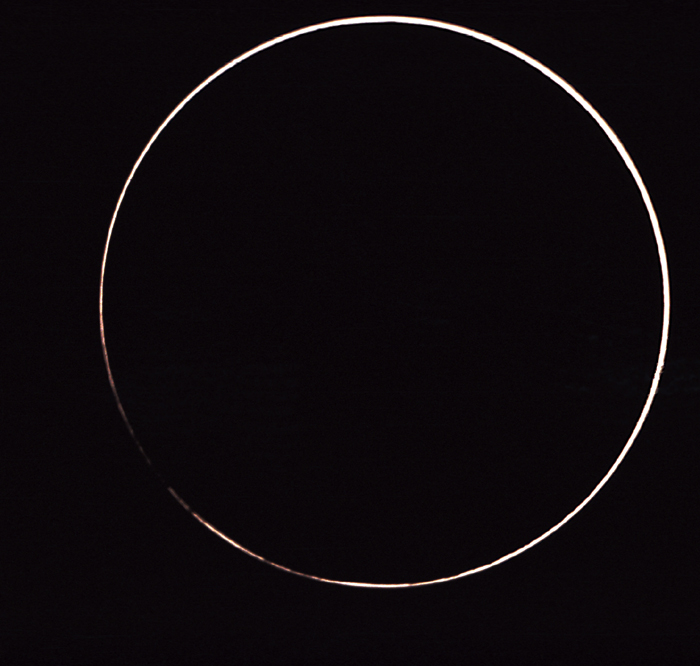
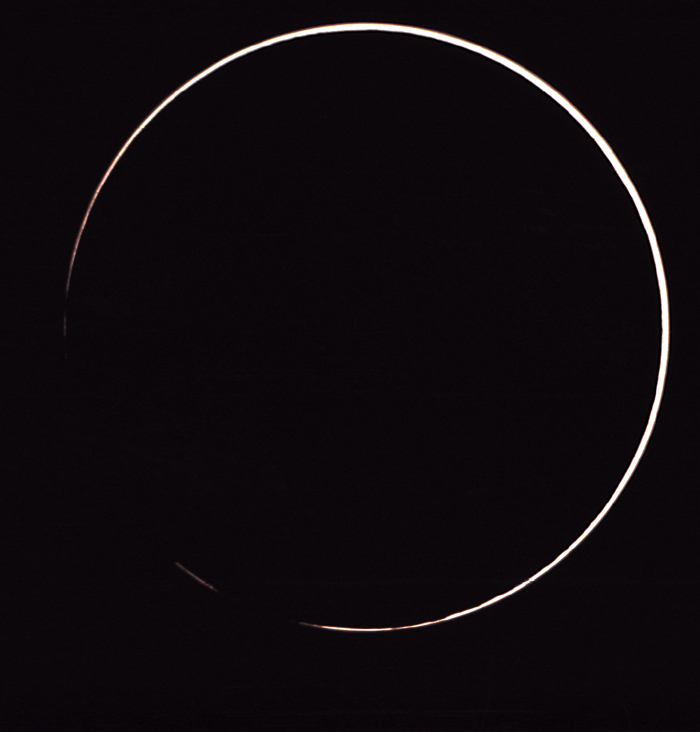
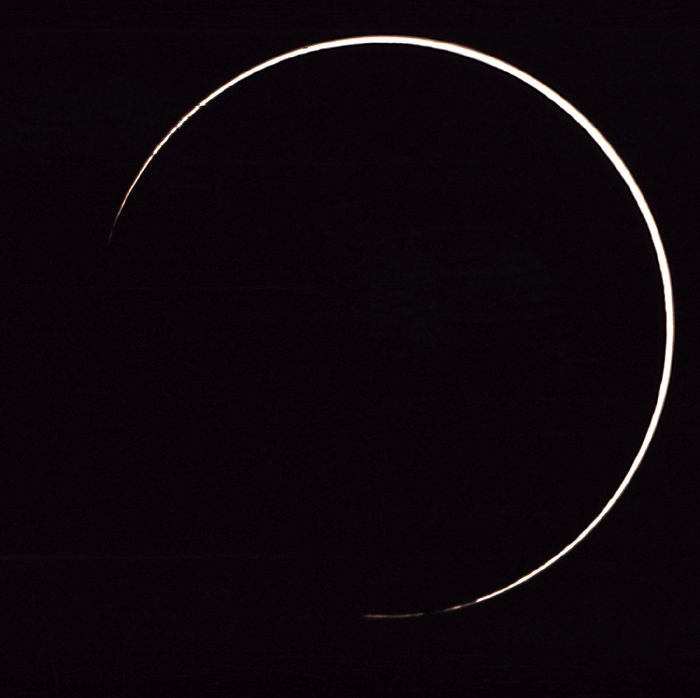
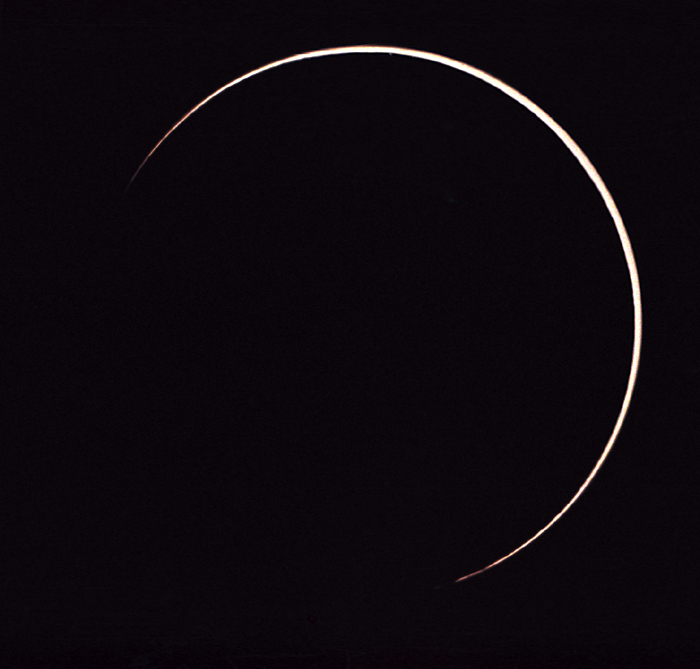
Many people began to leave once the annular phase ended however we all decided to wait until the end of the partial stages. Part of the reason for doing this was to observe all of the eclipse and partly it was to avoid the traffic on the road back to Perth!
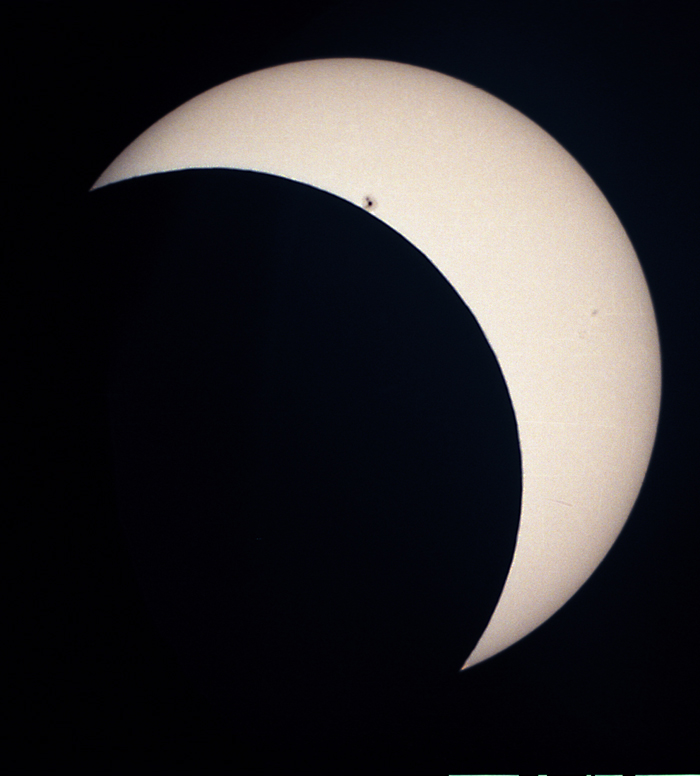
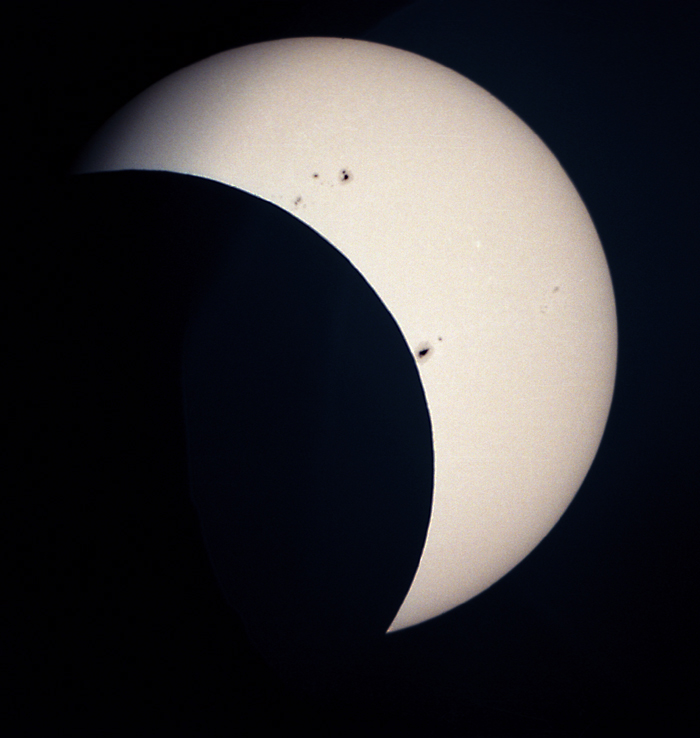
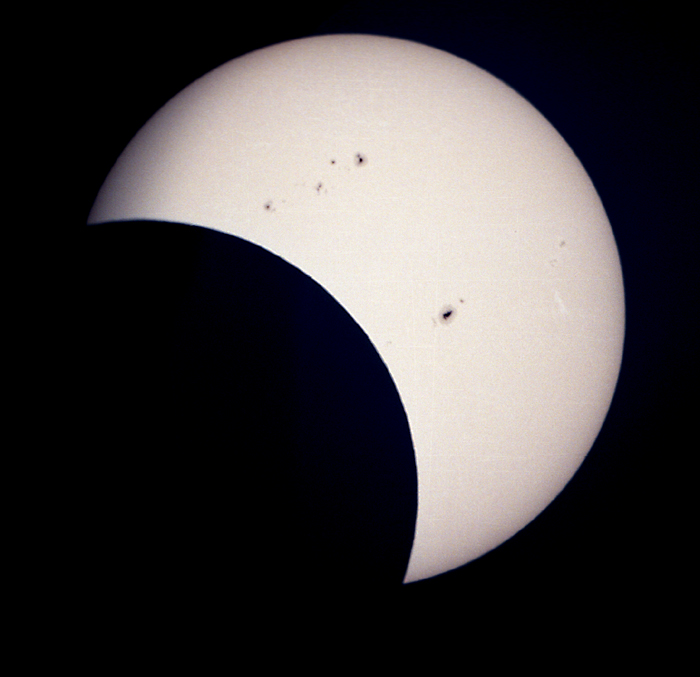
Meeting together later, we all agreed that it had been a great eclipse, even if it had not been total. It had certainly been my most successful eclipse, photography wise, although when I saw just how well Timo's video of the eclipse turned out, I was kicking myself for not bring a video camera myself. I did have access to one, I just did not think of it! Oh well.... next time!!!!
One result of the eclipse was that it got everyone thinking about a total eclipse. There will be one in Australia in December 2002 and so people promptly began making plans to observe that eclipse. However there was also going to be a very good total eclipse later in 1999, on August 11, with the path of totality passing across Europe. My brain was ticking over for ways of getting to observe that eclipse!
Several years later I was able to scan all of my photographs from the eclipse and then assemble them into an animated gif. The Sun does jump around somewhat which is a little distracting, but despite that it is interesting, especially around annularity, where Bailey's Beads are shown well. The movie can be seen using the link below.